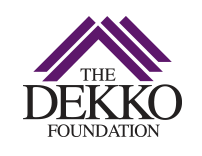Go ahead…provoke me!
“I provoke learning in my classroom!” So says Amber Opper, preschool lead teacher from the JAM Center in Garrett, Indiana.
At the Dekko Foundation we were used to provoke being used in a more common way…meaning to annoy or irritate…but Amber and her co-workers use it differently. They use the word provoke to mean “stir up” or “awaken!”
How intriguing…teachers as the awakeners of learning!
Here’s an example of how Amber provokes learning in her classroom:
“When we finally got a decent day and could go outside we went on a walk and brought back two tree branches that the children found. We let them dry off and now the children are creating with them. They have been working on it all week. They are so quiet, so focused. We brought in some tissue paper as one of the things for them to create with. Two of the boys have been working there all week…they are so engaged.”
The JAM Center’s work is a great example of what we mean at the Dekko Foundation when we say, “Great things happen when adults consider what children need to grow and develop!” In this case, what the children needed was a little provoking!
We want to help more adults think deeply about young children’s needs. If you’re interested, learn more about our early childhood initiative called bloom!
